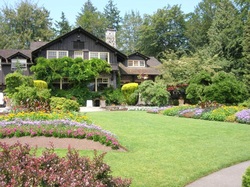
The word is out. Green is good for the environment and healthy for you too. If that is true then why have green products not become the main choice of the majority of consumers?
Another question that arises is, just what do we mean by Green?
If our focus is on healthy foods with no artificial or synthetically manufactured preservatives, flavorings and colorings added to natural foods we have a choice of foods where only natural ingredients are used in the recipe. But this is not the only factor to consider.
There is also the matter of the way food is grown. Do we want foods grown in a way that avoids the use of chemically synthesized fertilizers and pesticides?
We have crop varieties created by years of selective breeding or even created in the “test tube” through genetic modification. Many of our food crops and domesticated animals have evolved from wild varieties over centuries of human cultivation. Then there is the issue of the carbon footprint through the entire supply chain from crop and animal to the food on our table.
We could consider energy efficiency and savings through new technology as we decide our mode of transport, the building and insulation of our homes, and the landscaping of our gardens as well as our urban environment.
To better understand the issues do we need to shift from a Newtonian material physics to an Einsteinian quantum physics to understand the value of the world around us in terms of energy utilization and carbon footprints?
The confusion over Green labels on products and services will continue as we educate, debate and evaluate the alternative lifestyle choices available.
In the end the perception of what constitutes quality of living may drive our consumer choice and define market demands that entrepreneurs and businesses may rush to fulfill.
Siddha Param
International Business Consultant

 RSS Feed
RSS Feed
